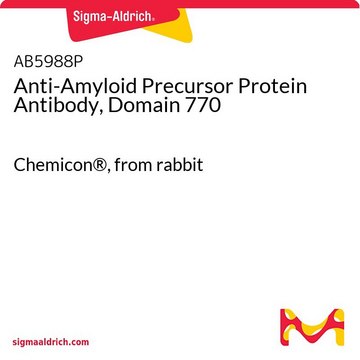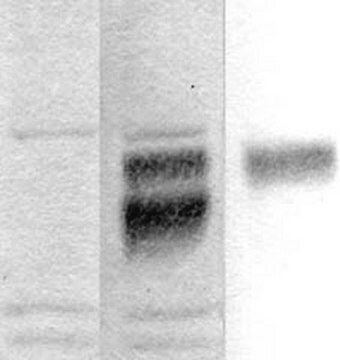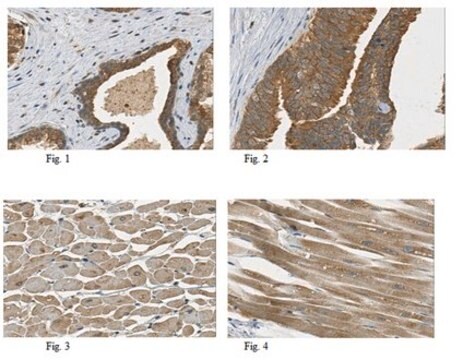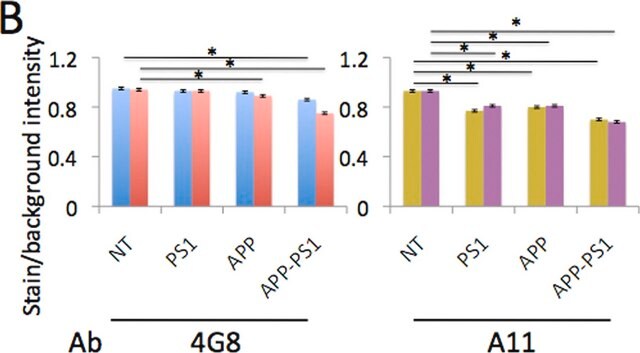AB5300
Anti-Amyloid Precursor Protein Antibody, universal
serum, Chemicon®
Synonym(e):
APP
About This Item
Empfohlene Produkte
Biologische Quelle
rabbit
Qualitätsniveau
Antikörperform
serum
Antikörper-Produkttyp
primary antibodies
Klon
polyclonal
Speziesreaktivität
human, monkey, mouse
Darf nicht reagieren mit
bovine
Hersteller/Markenname
Chemicon®
Methode(n)
immunoprecipitation (IP): suitable
western blot: suitable
NCBI-Hinterlegungsnummer
UniProt-Hinterlegungsnummer
Versandbedingung
dry ice
Posttranslationale Modifikation Target
unmodified
Angaben zum Gen
human ... APP(351)
Spezifität
Immunogen
Anwendung
Neurowissenschaft
Neurodegenerative Krankheiten
To reduce incubate the slide (Blot) in TBS (PBS) + 50mM 2-mercaptoethanol at 37°C for 3 h in the dark. Wash twice with TBS, then incubate in TBS (PBS) + 20 mg/ ml of Iodoacetic acid for 30 min at room temperature. Wash twice with TBS (PBS), block and process as usual.
Immunoprecipitation: Need to reduce and alkylate disulfide bonds to expose the epitope
Optimal working dilutions must be determined by end user.
Physikalische Form
Lagerung und Haltbarkeit
Rechtliche Hinweise
Haftungsausschluss
Sie haben nicht das passende Produkt gefunden?
Probieren Sie unser Produkt-Auswahlhilfe. aus.
Empfehlung
Lagerklassenschlüssel
10 - Combustible liquids
WGK
WGK 2
Flammpunkt (°F)
Not applicable
Flammpunkt (°C)
Not applicable
Analysenzertifikate (COA)
Suchen Sie nach Analysenzertifikate (COA), indem Sie die Lot-/Chargennummer des Produkts eingeben. Lot- und Chargennummern sind auf dem Produktetikett hinter den Wörtern ‘Lot’ oder ‘Batch’ (Lot oder Charge) zu finden.
Besitzen Sie dieses Produkt bereits?
In der Dokumentenbibliothek finden Sie die Dokumentation zu den Produkten, die Sie kürzlich erworben haben.
Unser Team von Wissenschaftlern verfügt über Erfahrung in allen Forschungsbereichen einschließlich Life Science, Materialwissenschaften, chemischer Synthese, Chromatographie, Analytik und vielen mehr..
Setzen Sie sich mit dem technischen Dienst in Verbindung.








